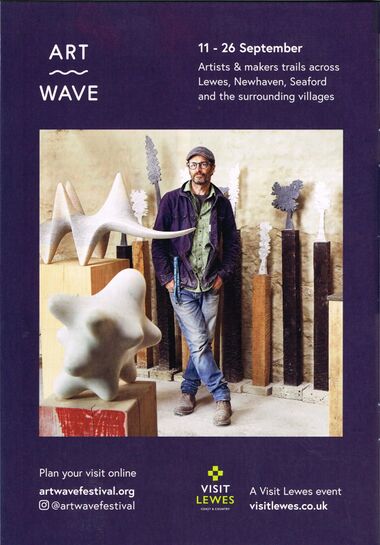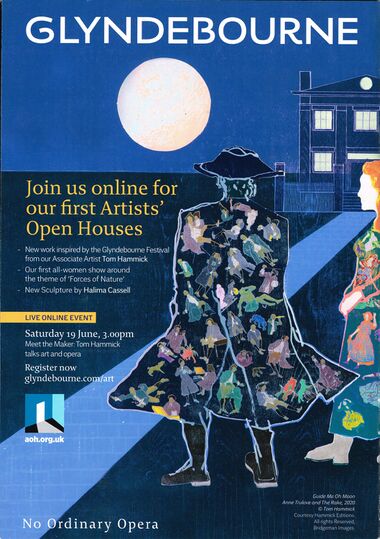Category:Lewes
2021: ArtWave [image info]
2021: Glyndebourne [image info]
Lewes.
1846 description
Eight miles north from Brighton is Lewes, a large, ancient, and populous town, abounding in historical and other interesting associations. On the road to it is Stanmer Park, the seat of the Earl of Chichester; and in sight from the remains of the Castle (supposed by Camden to have been built by William de Warren) that of Lord Gage, at Firle. The town is seated on an eminence, partly surrounded by hills, and watered by the river Ouse, over which it has a handsome bridge. From Newport, the port of Lewes, the Ouse runs up through the town, beyond which it is navigable for barges to a considerable distance. Lewes has now six or seven churches remaining out of twelve, besides chapels, &c., for dissenters. A celebrated sheep fair is held here in October. Here are also an excellent Race Course, a Theatre, a County Hall, a House of Correction, &c. Lewes is considered to have been, in former times, a fortified place. A memorable and bloody battle was fought in the neighbourhood in 1264, between Henry III and the Barons, headed by Simon de Montfort. The king was defeated, and taken prisoner. A Priory was founded at Lewes by William de Warren and his wife. It was the first house of the Cluniac order established in England. It was built in the year 1078 in consequence of the hospitable reception which the founders had experienced from the monks of Cluni, when exposed to some danger in travelling on the Continent. The ruins of the Priory are in the valley below the town, in the direction of Firle. – The market days of Lewes are Tuesdays and Saturdays; on each alternate Tuesday a large cattle market is also held.
— , Cradock & Co (publisher), , A Practical Guide to the Watering and Sea-bathing Places, on the Coasts ..., , 1846
Media in category ‘Lewes’
The following 4 files are in this category, out of 4 total.
- ArtWave, Lewes, (AOH 2021).jpg 1,115 × 1,600; 349 KB
- Cover showing Devils Dyke (BHAD10ed 1933).jpg 1,541 × 2,050; 1.23 MB
- Glyndebourne (AOH 2021).jpg 1,409 × 2,000; 682 KB
- Lewes, LBSCR 69, Jenny Lind Class locomotive (LBSCR 1903).jpg 2,043 × 1,204; 301 KB








